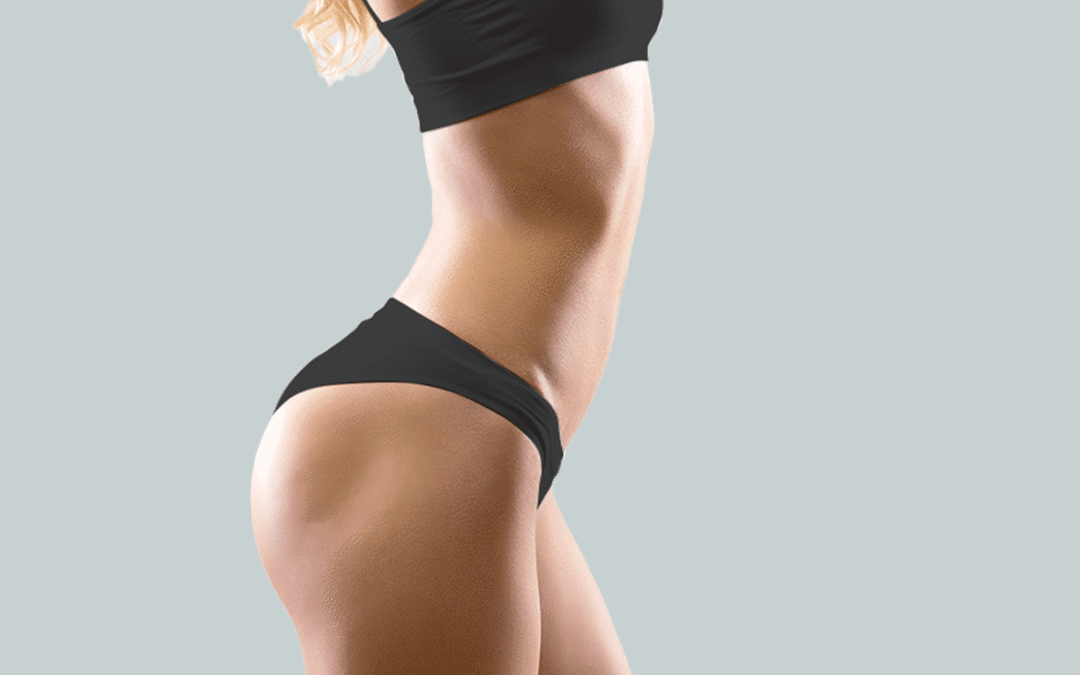
by laraibnaeem2005 | Jul 7, 2025 | Health
Deciding to enhance your silhouette is exhilarating, yet one big question lingers—how often do complications occur in buttock augmentation surgery? Placing this critical keyword right here sets the tone for an honest exploration of real‑world statistics and safeguards. Although Buttock Augmentation in Dubai(تكبير المؤخرة في دبي) enjoys rising popularity worldwide, it is still a surgical procedure, and knowing the frequency of complications helps you weigh benefits against possible setbacks, prepare mentally for recovery, and select best‑practice techniques that minimize risk.
The Importance of Tracking Complication Rates:
H3: Why Numbers Matter to Patients
-
Evidence‑Based Choice – Reliable data show overall complication rates range from 10 % to 24 % depending on technique, surgeon experience, and patient health.
-
Informed Consent – Understanding percentages for infection (2–5 %), seroma (1–6 %), and fat necrosis (5–15 %) ensures realistic expectations.
-
Motivation for Aftercare – Knowing complications spike when compression garments are ignored or smoking continues inspires strict compliance.
By interpreting these figures before Buttock Augmentation(تكبير المؤخرة), you enter the operating room with clarity, not guesswork.
Potential Risks and Their Frequencies:
Breaking Down the Numbers
Benefits & Modern Safety Improvements:
H3: How Advances Tip the Balance in Your Favor
-
Refined Implant Shells – Cohesive gel and textured surfaces decrease rupture and rotation, dropping mechanical failure rates below 1 % per year.
-
Intramuscular Fat Layering – Micro‑droplet injections in well‑vascularized muscle reduce fat embolism risk to under 0.05 %.
-
Enhanced Recovery Protocols – Same‑day ambulation, anti‑microbial washes, and targeted lymphatic massage trim infection and seroma incidence by nearly half.
-
Compression & Positioning Tools – Ergonomic cushions and graduated garments keep pressure off grafts, lowering shift‑related asymmetry.
These innovations don’t erase risk, but they dramatically improve success rates and long‑term satisfaction.
Frequently Asked Questions:
How soon will I know if I have a complication?
Minor swelling is normal, but persistent redness, fever, or one‑sided pain within two weeks warrants medical review.
Does BMI affect complication rates?
Yes; patients with BMI >30 face higher infection and anesthesia risks—discuss weight‑management plans pre‑op.
Can fat embolism occur months later?
No; this is an immediate post‑injection event. Following surgeon‑approved layering techniques minimizes likelihood.
Are implants safer than fat transfer?
They each carry distinct profiles: implants pose capsular contracture risk, while fat transfer faces resorption and lumpiness. Complication percentages overlap; personal anatomy and lifestyle guide best choice.
How often do revisions happen?
Roughly 10–15 % of patients seek some revision within five years, most commonly for symmetry adjustments or size changes rather than medical emergencies.
Is non‑surgical correction possible?
Mild contour irregularities respond to radiofrequency tightening or ultrasound‑assisted lipolysis; major issues still require surgical intervention.
Conclusion:
So, how often do complications occur in buttock augmentation surgery? While overall rates hover between 10 % and 24 %, serious events remain low thanks to modern techniques, vigilant aftercare, and patient education. Armed with these statistics, you can enter the journey confidently—prioritizing board‑certified expertise, following every recovery guideline, and scheduling periodic imaging. Awareness, not anxiety, is the key to transforming risk numbers into actionable steps that safeguard both your health and your future curves.
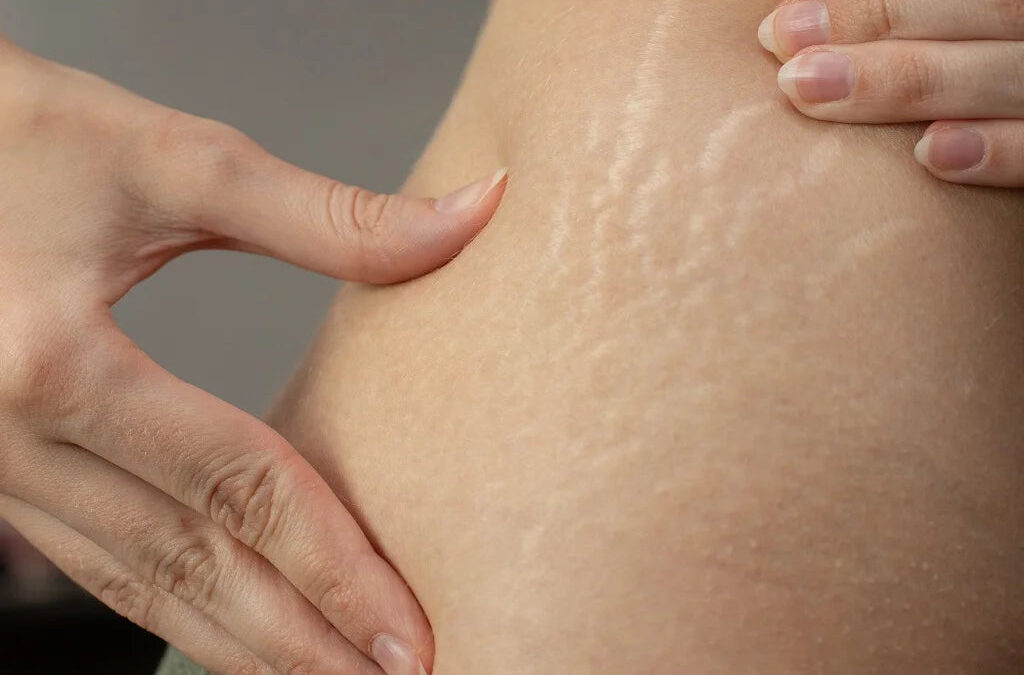
by laraibnaeem2005 | Jul 2, 2025 | Health
Stretch marks from weightlifting are a common concern among fitness enthusiasts, especially those who experience rapid muscle gain. These marks often appear as thin, streaky lines on the shoulders, arms, chest, or thighs—areas where the skin is stretched quickly due to muscle expansion. A frequent question that arises is: Can I remove stretch marks from weightlifting? While complete Stretch Marks Removal in Dubai(علاج إزالة علامات التمدد في دبي) is rarely possible, there are several effective ways to reduce their appearance and improve overall skin texture with the right care and consistency.
Why Stretch Marks Appear After Weightlifting?
Stretch marks, medically known as striae, develop when the skin is stretched beyond its natural elasticity. In the case of weightlifting, quick bulking or hypertrophy can lead to microtears in the dermis layer of the skin, especially in genetically susceptible individuals. These marks typically start out red, purple, or dark brown depending on skin tone and fade to white or silver over time.
Contributing Factors:
-
Rapid muscle growth without gradual progression
-
Genetic predisposition to low skin elasticity
-
Lack of proper skin hydration and nourishment
-
Inadequate recovery between intense training cycles
-
Hormonal shifts that affect collagen production
Understanding the cause helps guide the right treatment plan for improving skin resilience and fading stretch marks effectively.
Best Ways to Treat Weightlifting Stretch Marks:
While stretch marks from weightlifting are not harmful, many seek ways to improve their appearance. Several non-invasive and accessible treatments can stimulate collagen, fade discoloration, and smooth the skin’s surface.
Proven Treatment Options Include:
-
Microneedling Tools
Encourage collagen production and skin remodeling through tiny punctures that trigger healing.
-
Hyaluronic Acid Serums
Deliver deep hydration, plumping the skin and reducing the visibility of fine lines.
-
Retinol or Retinoid Creams
Speed up cell turnover and help fade newer marks over time (not suitable for everyone).
-
Natural Oils and Body Butters
Ingredients like rosehip oil, shea butter, and vitamin E help nourish and support elasticity.
-
Chemical Exfoliation (e.g., glycolic acid)
Promotes skin renewal and can help even out tone and texture over several weeks.
The earlier you start treatment—especially when stretch marks are still red or purple—the better the results are likely to be.
What Are the Risks of Treating These Stretch Marks?
Although most treatments are safe, some may carry risks if used improperly or on sensitive skin. Overuse of actives, skipping hydration, or aggressive exfoliation can worsen irritation rather than improve the skin’s condition.
Risks to Watch For:
-
Skin sensitivity or peeling from strong ingredients
-
Allergic reactions to natural or scented products
-
Over-exfoliation leading to dryness or flaking
-
Sun sensitivity when using retinoids or acids
-
Infection risk if microneedling is done with unclean tools
Always follow instructions, avoid overuse, and patch test before applying new products to large areas of skin.
Benefits of Treating Weightlifting-Related Stretch Marks:
Stretch Marks Removal Treatments(علاج إزالة علامات التمدد) not only improves the visual appearance of the skin but also enhances its health and resilience. With consistent care, skin tone becomes more even, and the texture improves noticeably, even if the marks don’t vanish completely.
Main Benefits:
-
Smoother, more supple skin
-
Faded discoloration and improved uniformity
-
Boosted collagen for long-term skin strength
-
Increased confidence when wearing sleeveless or tight clothing
-
Healthier skin barrier through regular hydration and nourishment
Visible improvement can be achieved with consistent application over weeks or months, depending on the severity of the stretch marks.
Frequently Asked Questions:
Are weightlifting stretch marks permanent?
They may not disappear completely, but they can fade significantly with treatment.
How long does it take to see results?
Improvements are usually seen in 8 to 12 weeks of consistent care.
Is it safe to use retinol for stretch marks?
Yes, but only if you are not overly sensitive and not exposed to excessive sun.
Do protein supplements cause stretch marks?
Not directly—they support muscle growth, which can indirectly contribute if skin stretches too fast.
Can I prevent new stretch marks while lifting?
Yes, by gradually increasing muscle mass, staying hydrated, and moisturizing regularly.
Conclusion:
So, can I remove stretch marks from weightlifting? While complete removal is rare, you can dramatically reduce their appearance with targeted, consistent care. Treatments like microneedling, hyaluronic acid, retinoids, and nourishing oils help restore skin elasticity and fade discoloration over time. With patience and the right regimen, these stretch marks can become a subtle reminder of progress—rather than a source of concern—allowing you to focus on your fitness goals with greater confidence.
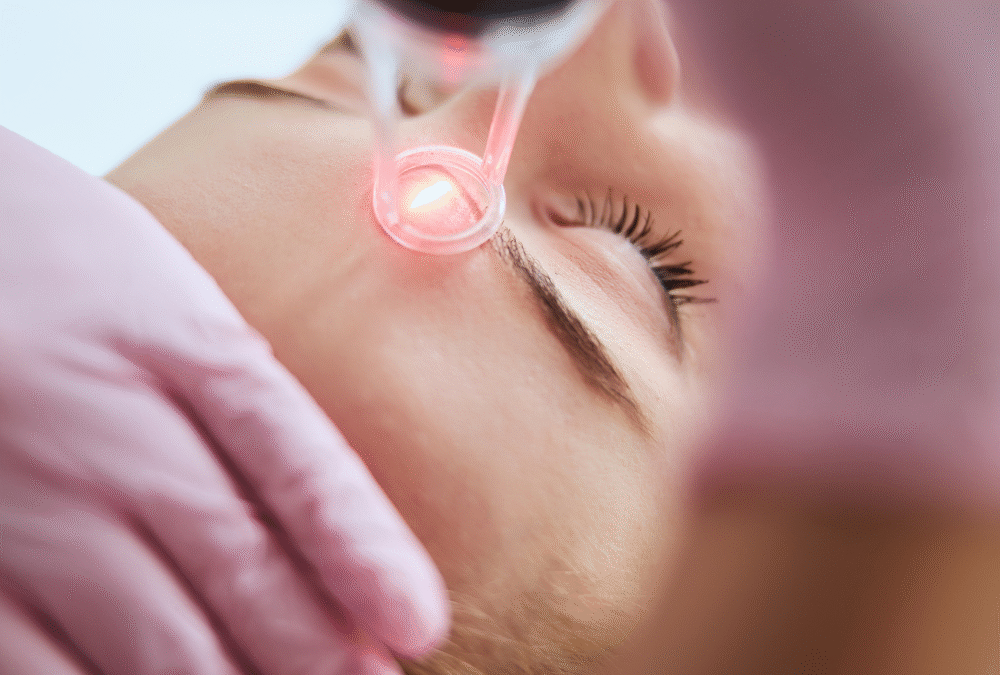
by laraibnaeem2005 | Jul 1, 2025 | Health
Laser resurfacing is a highly effective method for rejuvenating skin, reducing scars, fine lines, and sun damage. Among the most commonly used technologies are CO2 and Erbium lasers. Both are ablative lasers, meaning they remove outer layers of skin to stimulate healing and collagen production. While they serve similar purposes, they differ in intensity, wavelength, downtime, and suitability for various skin types. If you’re considering skin resurfacing, understanding the difference between CO2 and Erbium lasers is key to making an informed decision tailored to your goals and skin sensitivity.
Understanding the Core Function of Each Laser:
How CO2 and Erbium Lasers Work
Both Laser Treatments in Dubai(العلاج بالليزر في دبي) remove the damaged outer layer of skin and stimulate the underlying layers to encourage collagen regeneration. However, they operate at different wavelengths and penetration depths.
CO2 Laser (Carbon Dioxide Laser):
-
Emits a wavelength of 10,600 nm
-
Penetrates deeper into the skin
-
Typically used for deeper wrinkles, surgical scars, and significant sun damage
-
Causes more thermal damage, resulting in longer downtime
Erbium Laser:
-
Emits a wavelength of 2,940 nm
-
Offers precise, controlled ablation with minimal heat damage
-
Ideal for treating fine lines, mild-to-moderate wrinkles, and superficial skin concerns
-
Requires shorter recovery time
These lasers are chosen based on treatment depth, desired results, and the patient’s skin type and healing capacity.
Importance of Choosing the Right Laser for Your Skin Goals:
Why Matching Technology to Your Skin Needs Matters
Every skin type and concern demands a specific approach. Selecting between CO2 and Erbium lasers depends on the desired level of correction and your tolerance for recovery time.
CO2 laser is ideal for:
Erbium laser is ideal for:
-
Mild to moderate signs of aging
-
Early sun damage
-
Fine lines on sensitive areas (like around the eyes or mouth)
-
Individuals with darker skin tones or those wanting less downtime
Using the appropriate laser for your specific skin condition ensures maximum results with minimal risks.
Risks and Side Effects of CO2 vs. Erbium Lasers:
What to Consider Before Choosing a Laser
Each laser type has its own set of side effects and recovery expectations. CO2 lasers are more aggressive, which can mean more significant results but also increased risk.
CO2 laser risks:
-
Redness, swelling, and scabbing for up to 14 days
-
Higher risk of pigmentation changes
-
Possible prolonged healing in deeper treatments
-
Not always ideal for darker skin types
Erbium laser risks:
-
Mild redness and peeling for 3–7 days
-
Lower risk of hyperpigmentation or scarring
-
May require multiple sessions for deeper issues
-
Better suited for all Fitzpatrick skin types
Understanding the potential side effects helps you plan appropriately and avoid unwanted outcomes.
Benefits of CO2 and Erbium Laser Resurfacing:
What Each Treatment Can Achieve for Your Skin
Both Laser Treatments(العلاج بالليزر) offer significant benefits when used correctly, though their strengths vary in terms of aggressiveness and target depth.
Benefits of CO2 Laser:
-
Powerful skin tightening effect
-
Smoother texture and tone
-
Long-lasting results after a single session
-
Effective for severe acne scars and aging
Benefits of Erbium Laser:
-
Gentle yet effective for mild imperfections
-
Reduced risk of pigmentation issues
-
Quicker healing time
-
Less discomfort during and after treatment
Each has its place depending on the severity of the skin condition and the desired level of improvement.
Frequently Asked Questions:
Which laser is better for wrinkles?
CO2 is more effective for deep wrinkles, while Erbium is ideal for fine lines and early signs of aging.
Is the recovery time different?
Yes. CO2 laser typically requires 7–14 days of downtime, while Erbium laser recovery is often complete in 3–7 days.
Can both lasers be used on darker skin tones?
Erbium is generally safer for medium to darker skin tones due to its precision and lower risk of post-inflammatory hyperpigmentation.
Are results permanent?
While results can last years, the skin continues to age naturally. Maintenance treatments and skincare can help prolong the effects.
Is one more painful than the other?
CO2 treatments are often more intense, so they may involve more discomfort. Topical anesthetics are used for both.
Conclusion:
So, what’s the difference between CO2 and Erbium lasers? In short, CO2 lasers are deeper, more aggressive, and suited for advanced skin aging or scarring, while Erbium lasers offer a gentler, more precise solution with faster recovery for mild to moderate concerns. The right choice depends on your specific skin goals, downtime availability, and tolerance level. Both lasers deliver impressive results, but matching the treatment to your skin’s needs is essential for a safe, successful outcome and long-term skin health.
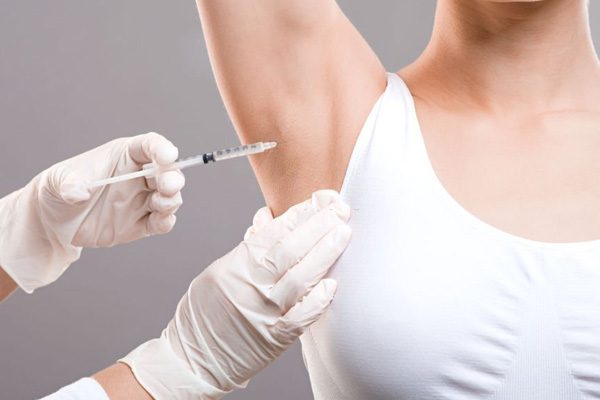
by laraibnaeem2005 | Jun 30, 2025 | Health
أصبح علاج MiraDry من أكثر الخيارات فعالية وانتشارًا في التخلص من مشكلة التعرق الزائد تحت الإبط، ويُستخدم على نطاق واسع بفضل نتائجه الدائمة نسبيًا واعتماده على تقنية الموجات الدقيقة التي تستهدف الغدد العرقية مباشرة. مع تزايد الإقبال على هذا العلاج، يتساءل الكثيرون: هل يمكن للرجال والنساء الحصول على MiraDry؟ والإجابة ترتبط بفهم آلية العلاج، ملاءمته لكلا الجنسين، وفوائده المتعددة. في هذا المقال، نسلط الضوء على مدى شمولية هذا العلاج للجميع، مع توضيح أهمية الإجراء، المخاطر، الفوائد، والإجابة عن أبرز الأسئلة التي تدور حوله.
:أهمية علاج MiraDry
لماذا يُعد MiraDry خيارًا مفضلًا للرجال والنساء؟
التعرق الزائد تحت الإبط لا يُفرق بين رجل أو امرأة، فهو حالة طبية تؤثر على جودة الحياة لدى الجميع دون استثناء. يعاني بعض الأشخاص من التعرق المفرط لدرجة أنه يتسبب لهم بالإحراج في المواقف اليومية، ويؤثر على اختيارهم للملابس أو ثقتهم بأنفسهم. Miradry Treatment in Dubai(علاج ميرادري في دبي) يقدم حلاً فعالًا وطويل الأمد لهذه المشكلة دون تدخل جراحي، ما يجعله مناسبًا لكل من الرجال والنساء الباحثين عن راحة دائمة من التعرق والروائح المصاحبة له. العلاج لا يعتمد على نوع الجلد أو الجنس، بل يُصمم ليناسب من يعانون من فرط التعرق في منطقة تحت الإبط تحديدًا.
:مدى ملاءمة العلاج لكلا الجنسين
هل MiraDry مناسب فعلًا للرجال كما هو للنساء؟
نعم، MiraDry مناسب تمامًا لكلا الجنسين دون تمييز. سواء كان الشخص رجلًا أو امرأة، فإن العلاج يعمل بنفس الطريقة ويحقق نتائج متقاربة. الغدد العرقية تحت الإبط تتشابه في تركيبها ووظيفتها لدى الرجال والنساء، مما يعني أن استجابة الجسم للعلاج ستكون مشابهة. الرجال غالبًا ما يعانون من تعرق غزير بفعل نشاط الغدد، في حين أن بعض النساء يتأثرن نفسيًا أكثر من الناحية الاجتماعية، لذا يعتبر العلاج مناسبًا وفعالًا لكليهما من جوانب مختلفة.
:المخاطر والآثار الجانبية المحتملة
هل تختلف المخاطر بين الرجال والنساء؟
الآثار الجانبية المرتبطة بعلاج Miradry Treatment(علاج ميرادري) لا تختلف كثيرًا بين الرجال والنساء. وتشمل عادةً:
هذه الأعراض تكون مؤقتة وغالبًا ما تزول في غضون أيام إلى أسابيع قليلة. لا توجد دراسات تُظهر أن أحد الجنسين أكثر عرضة للمضاعفات من الآخر. ويُعد العامل الأهم هو الحالة الصحية العامة للفرد، ومدى التزامه بإرشادات ما بعد العلاج.
:الفوائد المتوقعة بعد العلاج
كيف يستفيد الرجال والنساء من MiraDry في حياتهم اليومية؟
-
الرجال: غالبًا ما يُعانون من تعرق غزير يسبب ظهور بقع دائمة على الملابس، خاصة في بيئات العمل أو المناسبات الاجتماعية. MiraDry يساعدهم في الحفاظ على مظهر نظيف وشعور دائم بالراحة.
-
النساء: يميلن إلى الانزعاج من الروائح المصاحبة للتعرق أو تلف مستحضرات التجميل بسبب العرق، ويجدن في MiraDry حلاً يمنحهن الثقة في كل الأوقات دون الاعتماد المستمر على مزيلات العرق.
بالنسبة للجنسين، يُسهم العلاج في تقليل استخدام المواد الكيميائية على الجلد، ويمنح شعورًا بالنظافة والتحرر من القلق المرتبط بالتعرق.
الأسئلة الشائعة حول مدى ملاءمة MiraDry للرجال :والنساء
هل يحتاج الرجال إلى عدد جلسات أكثر من النساء؟
في معظم الحالات، تكون جلسة واحدة كافية، سواء للرجل أو المرأة. لكن في حالات فرط التعرق الشديد، قد يُوصى بجلسة ثانية لتحقيق النتائج المثلى، وهذا الأمر لا يرتبط مباشرة بجنس المريض بل بمستوى التعرق الفردي.
هل يؤثر نوع البشرة أو كثافة الشعر على العلاج؟
قد تتطلب البشرة السميكة أو كثافة الشعر العالية في منطقة تحت الإبط (وهي أكثر شيوعًا لدى الرجال) تحضيرات خاصة قبل الجلسة مثل الحلاقة الجيدة، لكن لا يؤثر ذلك على فعالية العلاج بشكل عام.
هل توجد فروق في نتائج العلاج بين الرجال والنساء؟
النتائج تكون متقاربة للغاية، حيث أن MiraDry يعمل على استهداف الغدد العرقية مباشرة دون أن يتأثر بهرمونات الجسم أو الفروق بين الجنسين. المهم هو الالتزام بالإرشادات بعد العلاج للحصول على أفضل نتيجة ممكنة.
:الخاتمة
سواء كنت رجلًا أو امرأة، فإن علاج MiraDry يمثل خيارًا فعالًا وآمنًا للتخلص من التعرق الزائد تحت الإبط وتحسين جودة الحياة بشكل عام. التقنية مصممة لتناسب الجميع، وتمنح نتائج دائمة نسبيًا دون الحاجة إلى عمليات جراحية أو استخدام مستمر للمواد الكيميائية. لا يوجد تمييز في فعالية العلاج أو تأثيراته الجانبية بين الجنسين، مما يجعله مناسبًا لأي شخص يبحث عن حل عملي ونهائي لمشكلة مزعجة ومستمرة. MiraDry هو خطوة نحو راحة تدوم وثقة لا تهتز.
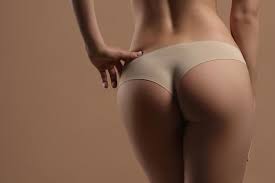
by laraibnaeem2005 | Jun 28, 2025 | Health
Buttock augmentation is a sought-after procedure that enhances the shape, size, and contour of the Buttock Augmentation in Dubai(تكبير الأرداف في دبي) or fat transfer. While its popularity continues to grow, there are still several misconceptions and myths surrounding the treatment that can confuse or mislead potential patients. Understanding the truth about this cosmetic procedure is essential to make informed choices. So, let’s explore common myths about buttock augmentation and uncover the real facts to clear the air once and for all.
Importance of Dispelling Myths:
Misinformation can influence expectations, cause unnecessary fear, or prevent people from exploring treatments that may be ideal for them. Buttock augmentation, when done correctly, can produce natural-looking, long-lasting results. But when myths persist, they can distort perceptions and delay the decision-making process. Educating yourself with facts ensures you feel confident and prepared for a safe and satisfying journey.
Why Believing Myths Can Be Harmful
-
Encourages unrealistic expectations
-
May lead to poor preparation or aftercare
-
Deters suitable candidates from exploring the option
-
Increases anxiety or stigma around the procedure
Knowledge is empowerment—especially when it comes to enhancing your body confidently and responsibly.
Myth #1: Buttock Augmentation Always Looks Fake
One of the most persistent myths is that buttock augmentation results always look unnatural or exaggerated. In reality, modern techniques focus on achieving balance and harmony with the body’s existing proportions. Fat grafting (BBL) in particular offers soft, smooth, and natural-looking results when done with proper planning and care.
The Truth
-
Results depend on the method and volume used
-
Customization ensures proportionate enhancements
-
Implants and fat grafts can look subtle and refined
-
A natural result is a priority in modern cosmetic practice
The goal is enhancement, not overstatement—and most patients aim for a boost in contour, not drama.
Myth #2: It’s Only for Young People or Models
Some people believe that buttock augmentation is only suitable for influencers or younger individuals, but that’s far from true. Candidates of various ages, backgrounds, and body types seek augmentation for different reasons—including aging, weight loss, or post-pregnancy volume loss.
The Truth
-
Many individuals in their 30s, 40s, and even 50s opt for the procedure
-
It’s suitable for anyone healthy with realistic expectations
-
Goals vary from dramatic to subtle improvements
-
Personalized plans are based on anatomy, not trends
Everyone deserves to feel confident in their body, regardless of age or profession.
Myth #3: Fat Grafting Results Don’t Last
It’s a common belief that fat transferred during a BBL disappears completely over time. While not all the fat survives, a significant portion becomes permanent if proper post-operative care is followed. Fat survival depends on how well it integrates with surrounding tissues, and techniques continue to evolve to increase retention rates.
The Truth
-
About 60–80% of transferred fat typically survives long-term
-
Early care such as avoiding pressure is crucial for fat survival
-
Healthy habits and weight stability support lasting results
-
Revision is rarely needed when care instructions are followed
Understanding how the body processes fat helps manage expectations realistically.
Myth #4: The Procedure Is Extremely Dangerous
While any surgical procedure carries risks, the idea that Buttock Augmentation(تكبير الأرداف) is inherently dangerous is often exaggerated. Advances in techniques, careful screening, and safety protocols have significantly improved outcomes. Most complications arise from improper technique or neglecting aftercare.
The Truth
-
Modern methods prioritize patient safety
-
Choosing a well-qualified provider reduces risks
-
Following recovery guidelines helps prevent complications
-
Serious risks are rare with proper planning and care
Informed choices and responsible care are your best defense against avoidable issues.
FAQs About Buttock Augmentation Myths:
Is it true that I won’t be able to sit for months after a BBL?
No. Sitting is restricted only during the initial healing phase—usually 2–3 weeks—with the help of special cushions. Normal activities resume gradually.
Will my results always look overdone?
Not at all. When proportion and symmetry are prioritized, results can look natural, balanced, and elegant.
Do I have to keep gaining weight for fat transfer to work?
No. Gaining weight specifically for the procedure isn’t necessary or recommended. Sufficient fat from common donor areas usually suffices.
Is recovery unbearable?
While discomfort is expected, recovery is manageable with proper care, rest, and the right support.
Can exercise ruin my results?
No, moderate and strength-based workouts actually help maintain tone and volume. Excessive cardio or weight loss may affect fat retention.
Conclusion:
Separating fact from fiction is key when considering cosmetic enhancement. As we’ve explored these common myths about buttock augmentation, it becomes clear that many concerns stem from outdated or exaggerated claims. In truth, buttock augmentation is a customizable, safe, and rewarding procedure when performed correctly and followed by appropriate care. Whether you desire subtle shaping or a more dramatic curve, understanding the realities behind the treatment allows you to move forward with confidence, clarity, and the results you truly deserve.





